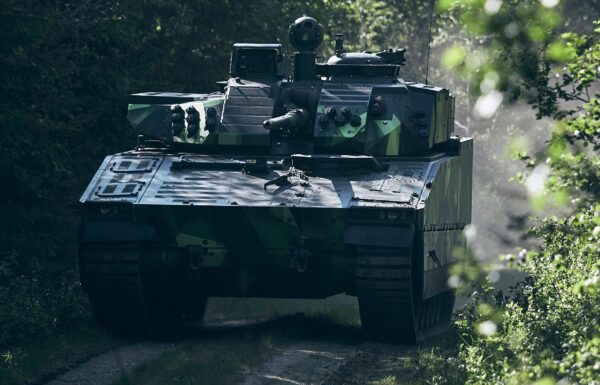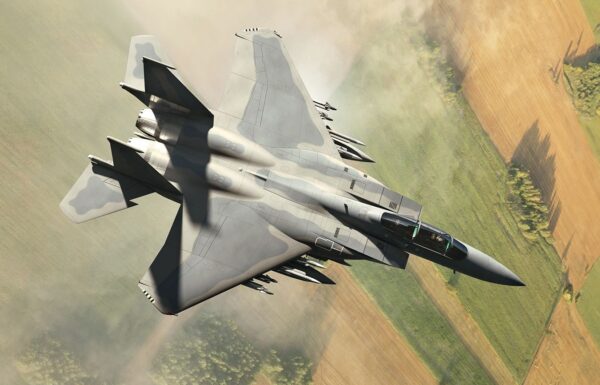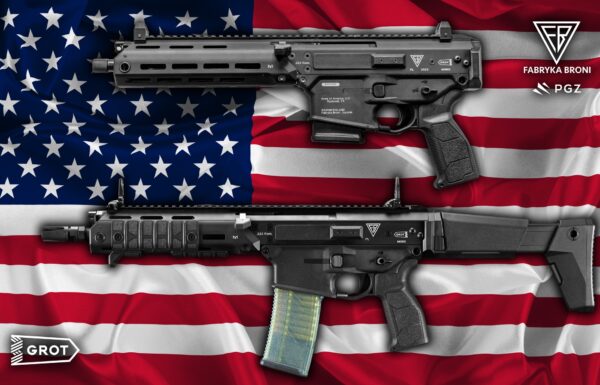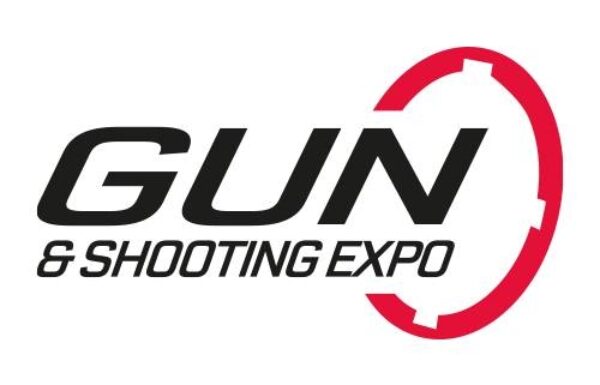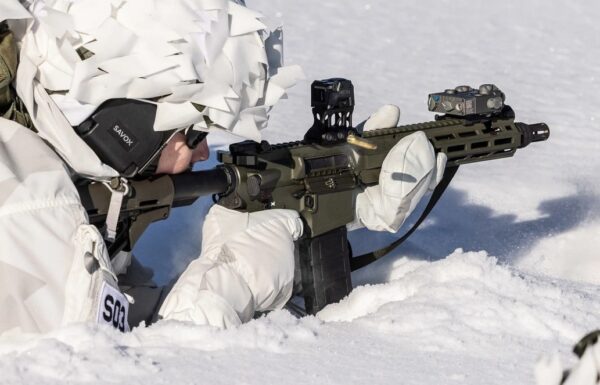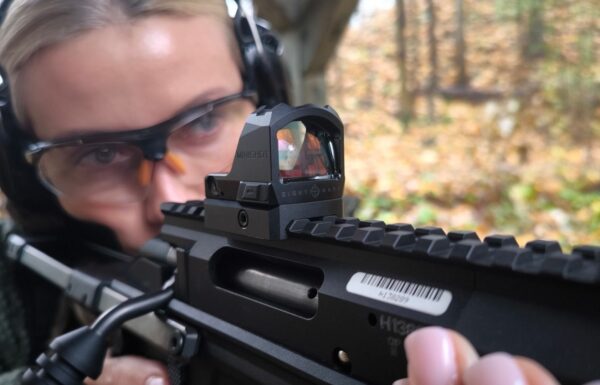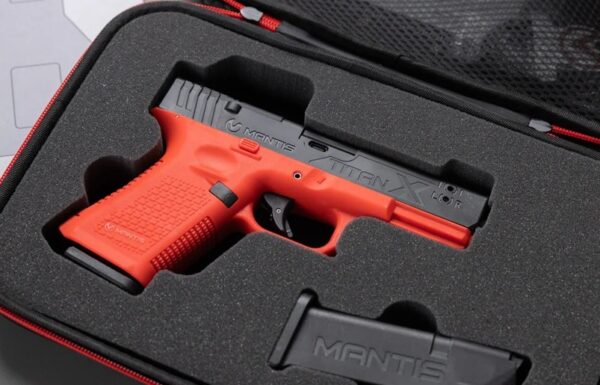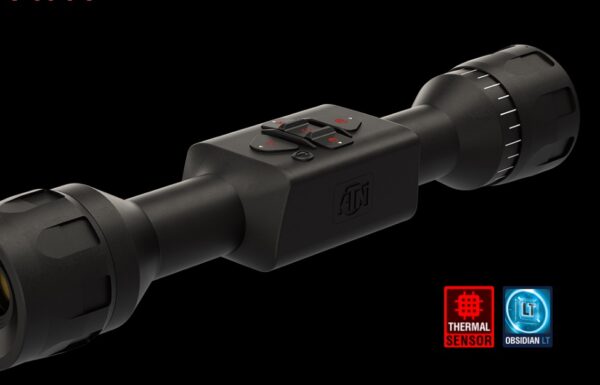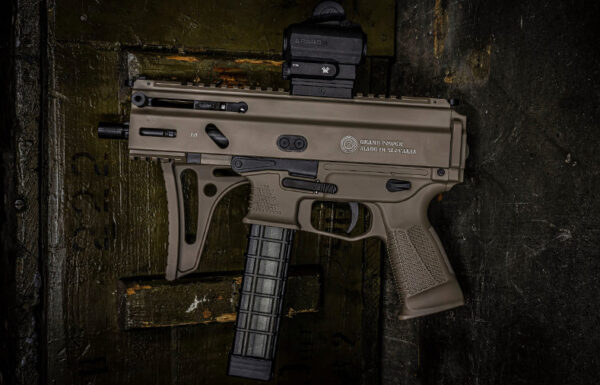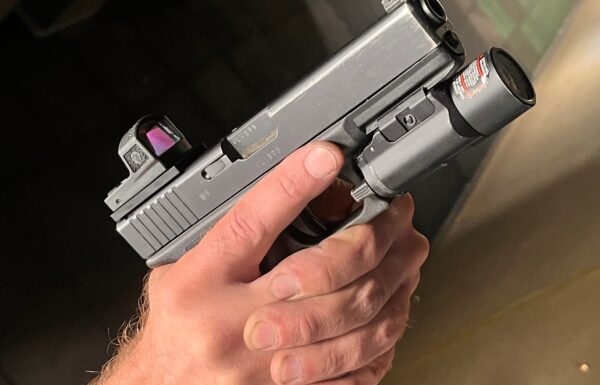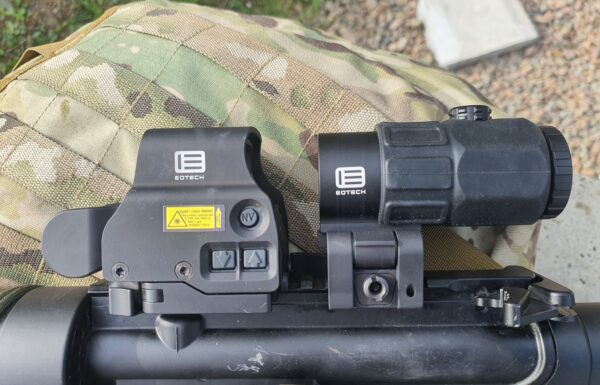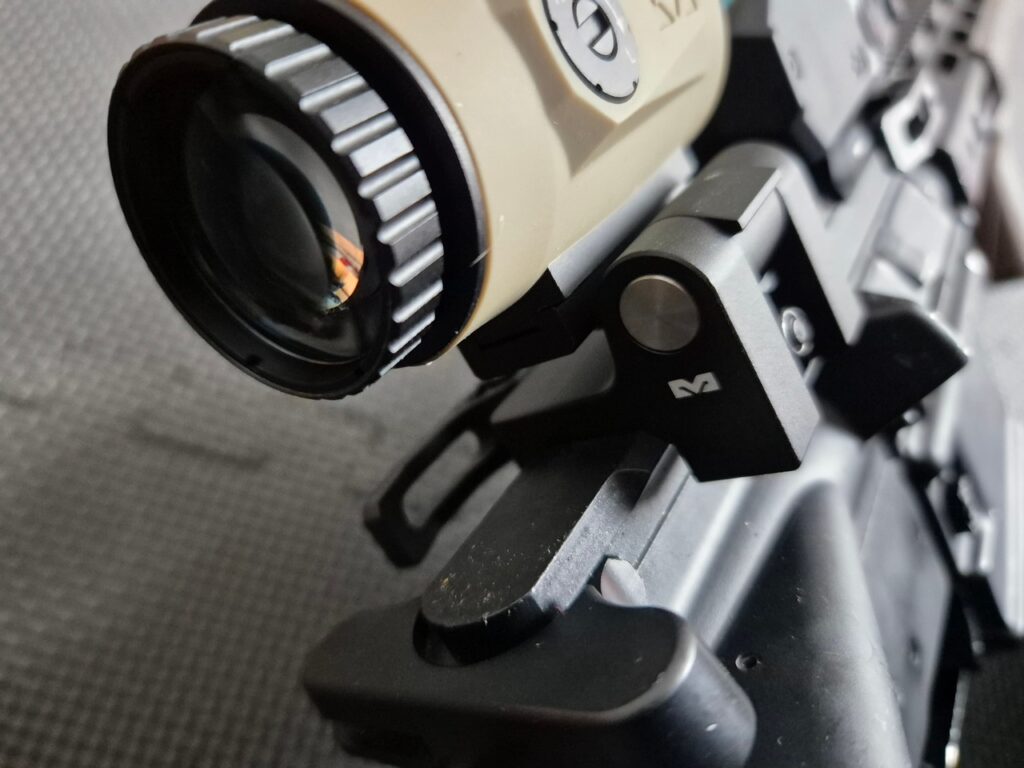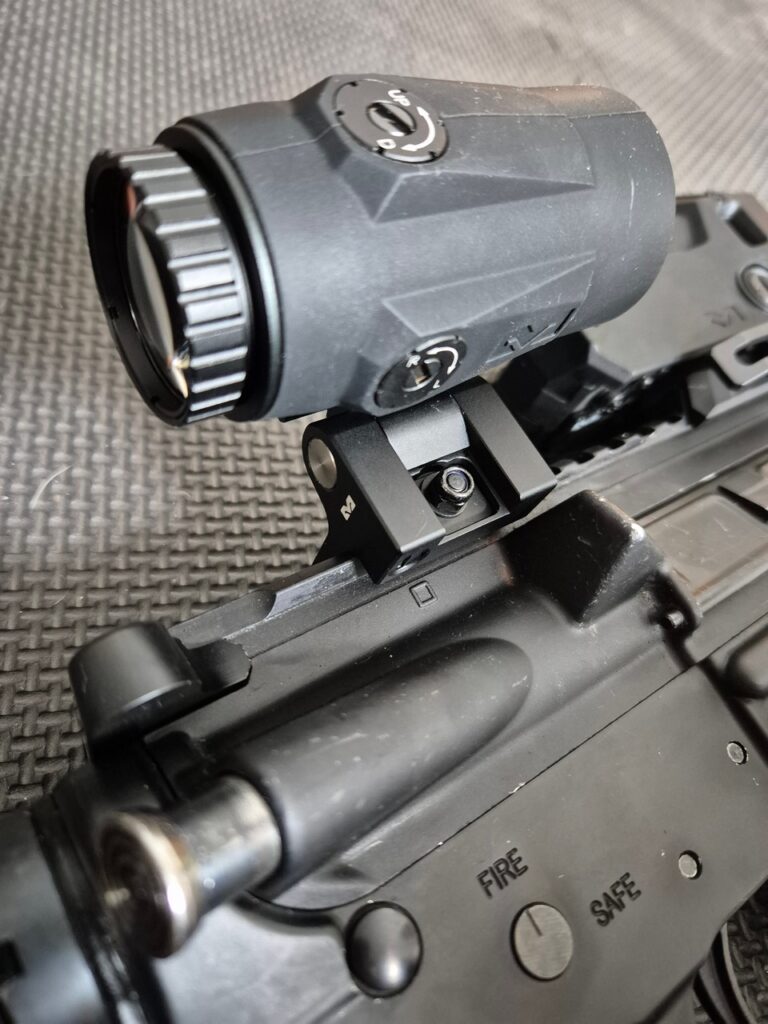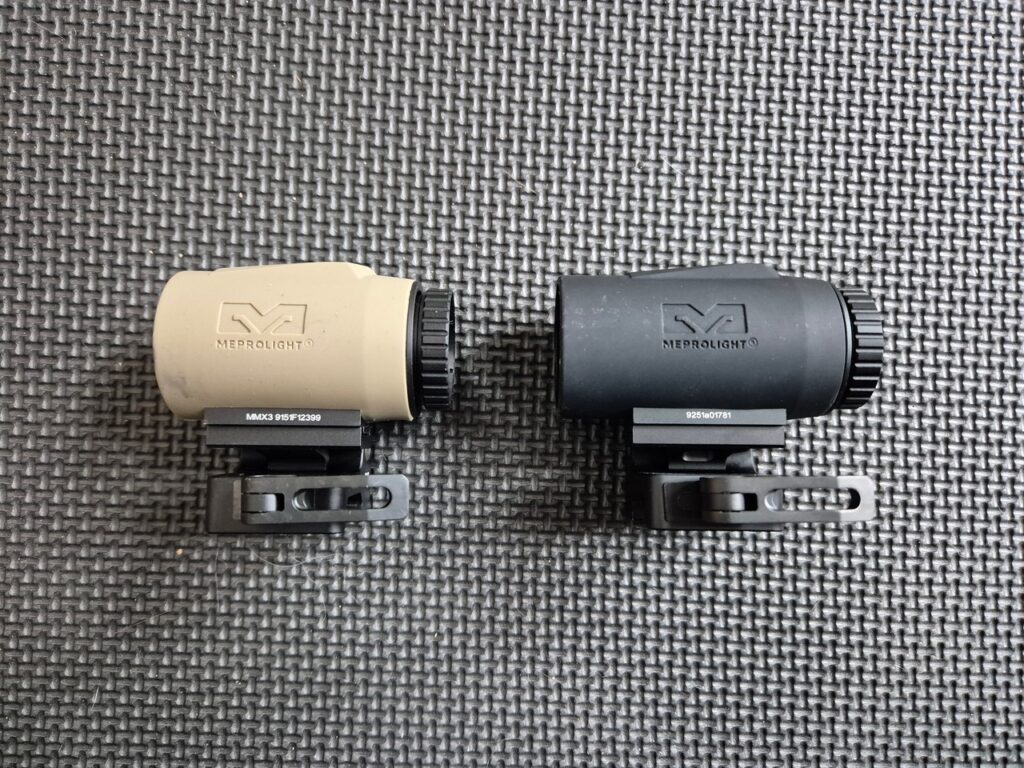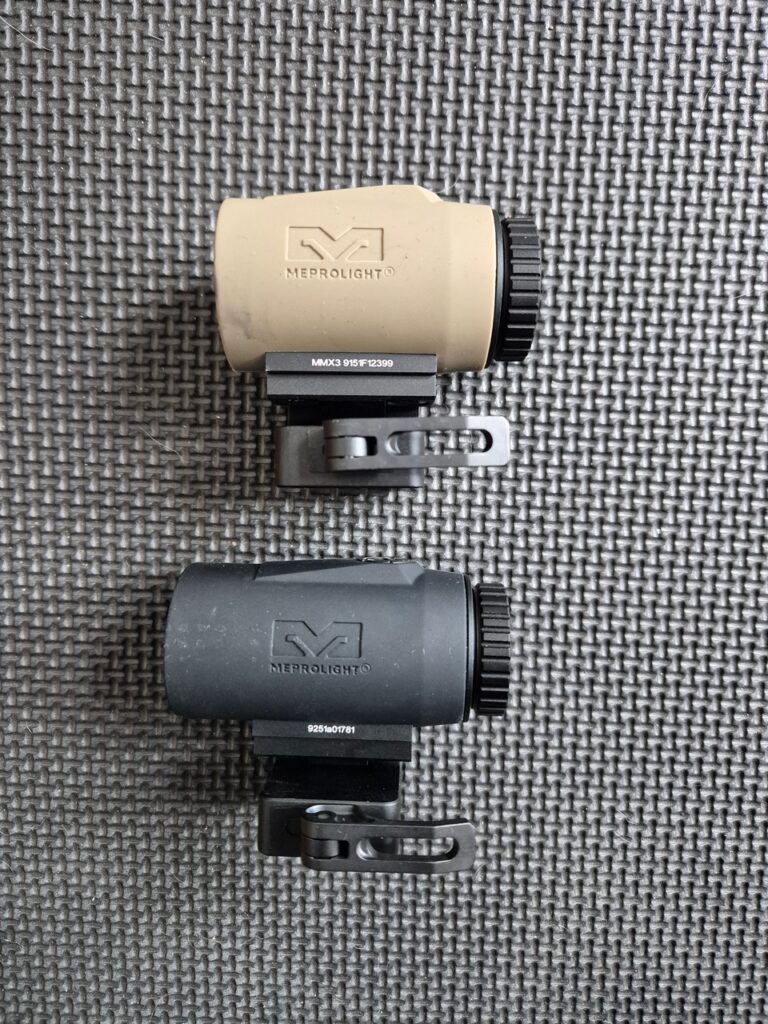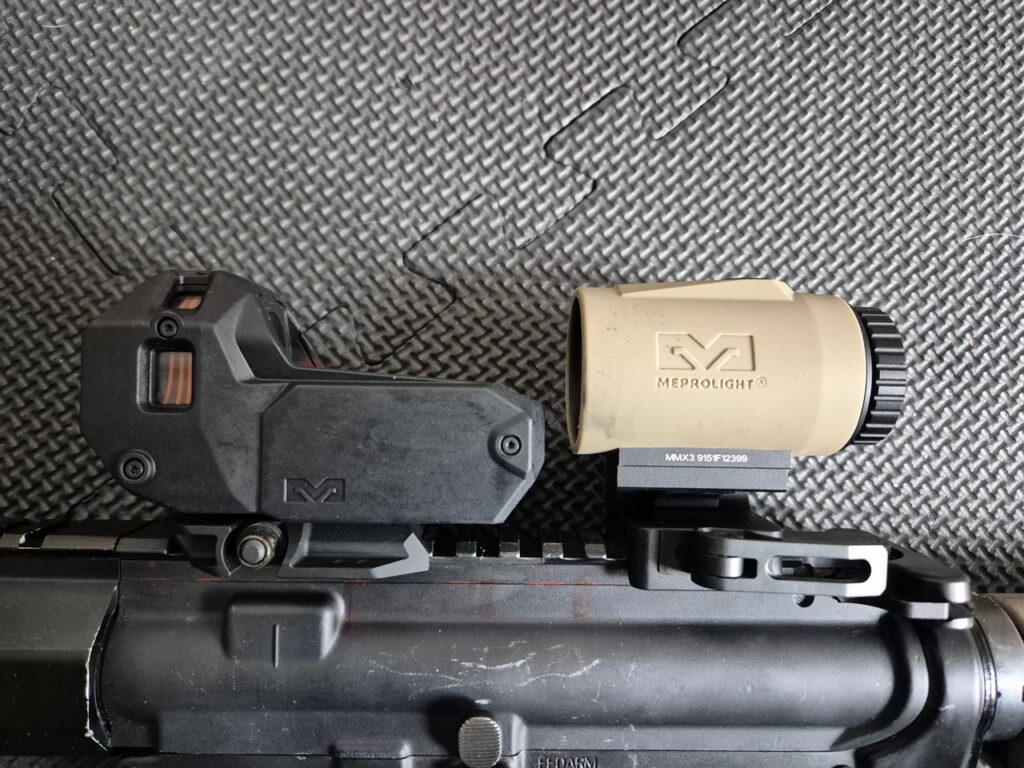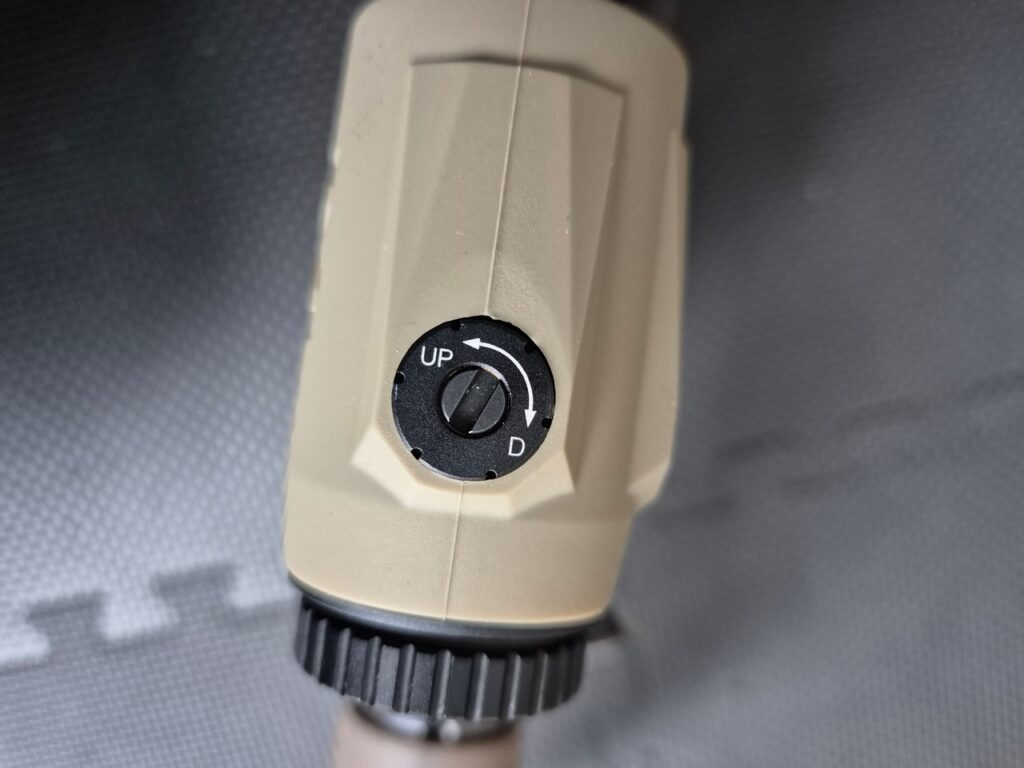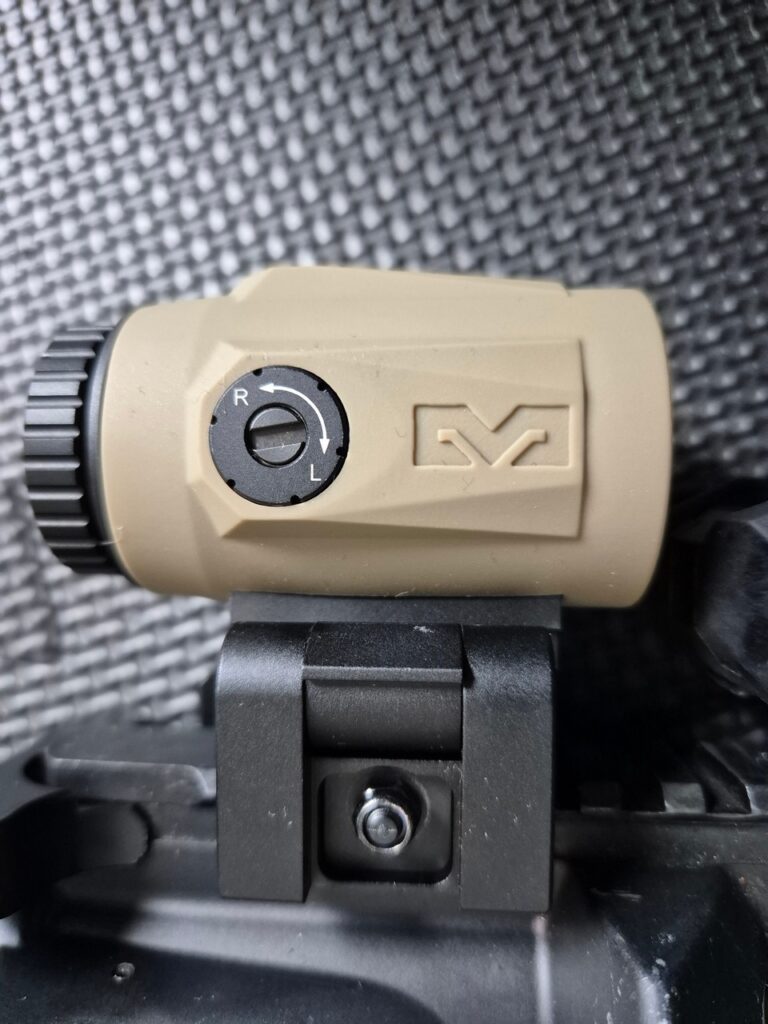Wybór powiększalnika
The magnifier market is an interesting one. Many shooters opt for a magnifier specifically designed for their red dot or holographic sights. Of course, sometimes the choice comes down to the price or the mounting system used on the weapon’s rail.
However, it’s important not to forget that magnifiers are optical devices meant to assist our shooting, not hinder it with poor glass quality. That’s why today we’re taking a closer look at two models from Mepro: the MMX3 and MMX4.
New Meprolight MMX3 & MMX4 Magnifiers
The Israeli company Meprolight, known in the industry as a primary optics supplier for the IDF, has expanded its lineup with two compact magnifiers. Both models offer minimalist yet fully capable solutions featuring flip-to-side mounts, allowing the optic to be quickly moved out of the line of sight – interestingly, without the need for a locking button.
Despite lacking a locking button, the flip-to-side mount does not show any tendency for the magnifier to shift position unintentionally.
The MMX3 and MMX4 are virtually identical in design. The key difference, of course, is magnification – 3x for the MMX3 and 4x for the MMX4.
At first glance, the dimensions of the magnifiers are not drastically different.
Thanks to its lower magnification, the MMX3 model is slightly lighter and shorter than its larger counterpart. The exact technical specifications are provided in the table below.
MMX3 | MMX4 |
|
| Magnification | 3× | 4× |
| Objective Lens / Exit Pupil | 18 mm / 6 mm | 24 mm / 6 mm |
| Weight (with mount) | 268 g | 290 g |
| Length | 70 mm | 82 mm |
| FOV | ~7.2° | ~5.5° |
The optical axis is easy to adjust. If height adjustment is needed, mounting spacers are available.
What's inside the box?
I have to admit, the packaging that Mepro optics come in surprised me. Inside, there’s a composite insert with a RIS rail, on which the optic is mounted. The set also includes two rubber covers for the device, one black and one FDE, as well as cleaning cloths.

The covers not only protect the magnifier from scratches, especially when it’s flipped to the side, but also allow it to match the color scheme of your rifle. It’s a very nice addition to the set that many users are sure to appreciate.
Mechanics
In terms of build quality, the magnifiers hold their own against the competition. While the manufacturer doesn’t specify the materials used, the quality leaves little to be desired. The zeroing dials operate with a distinct click, and the mount, despite lacking a locking mechanism, holds firmly in both extreme positions. The test units spent only a few weeks mounted on my rifles, but during that time, they showed no signs of loosening, nor did they appear prone to it. The previous model (MMX4) could be mounted using third-party mounts (such as those from Unity), and that also seems possible here, although we haven’t been able to confirm it yet.
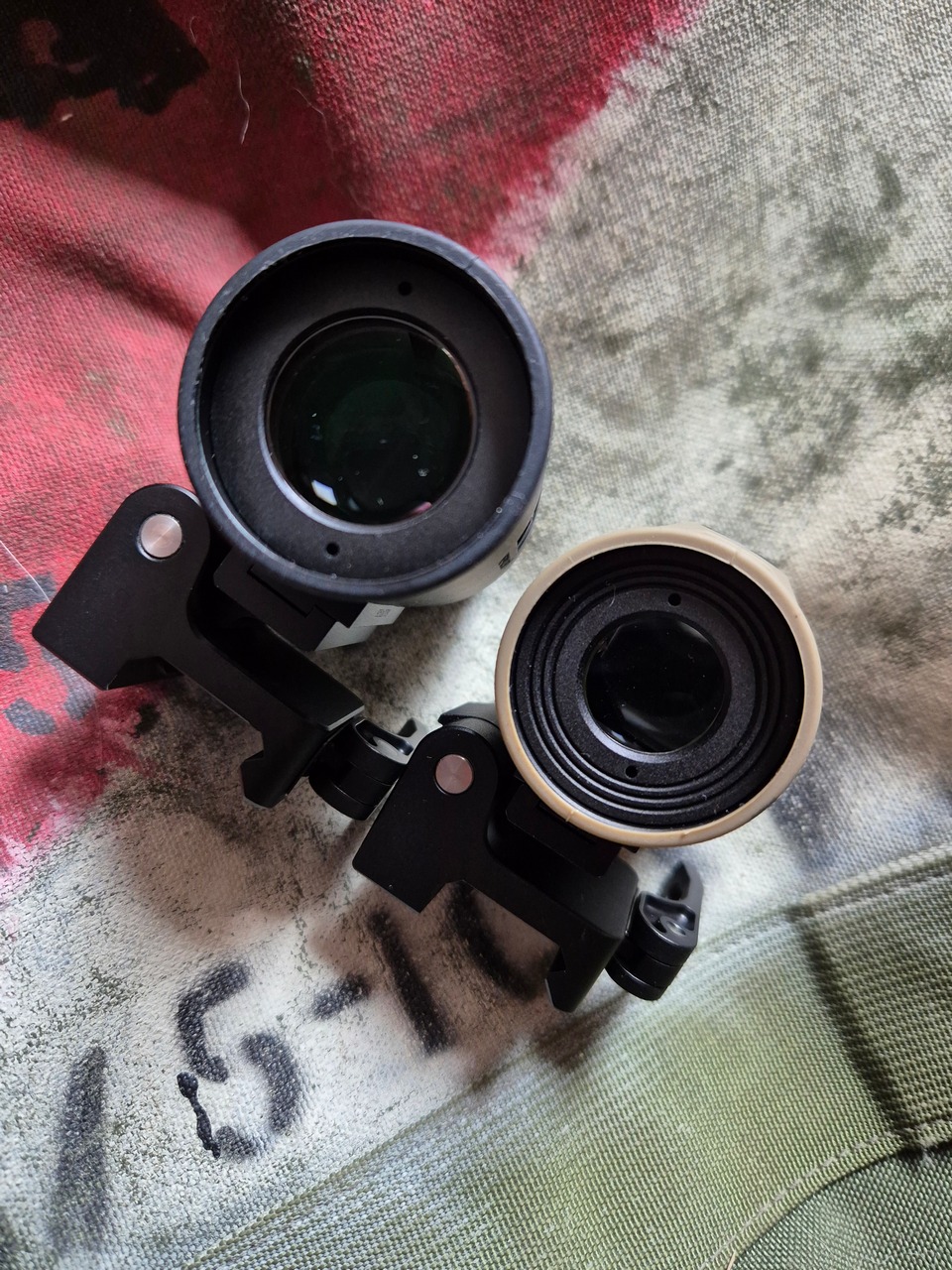
Optical Quality of the MMX3 and MMX4
In their price range, both models offer surprisingly good image quality. The image remains sharp at distances starting from around 30 meters, while at closer ranges there is some slight blurring. However, this isn’t really an issue, considering that for close-range targets the optic can simply be flipped to the side.
Both the MMX3 and MMX4 use high light-transmission glass (theoretically around 90–92%, though Meprolight doesn’t provide exact figures). In practice, this results in a bright image, even in poor lighting conditions.
The glass doesn’t impose excessive tinting, which is often a problem in cheaper magnifiers. Colors appear natural with good contrast. The reticle remains clearly visible, and I didn’t notice any flaring, even when the dot brightness was set high.
Turrets are protected with screw-on caps. The adjustment clicks distinctly, but the slot requires a small screwdriver for use.
When it comes to chromatic aberration, this is where we see the most noticeable difference between the MMX3 and MMX4. In the MMX3, slight chromatic aberration appears at the edges of the field of view—especially when aiming at a target against a bright background. This effect isn’t surprising given the small objective diameter (18 mm), but it doesn’t significantly impact practical use.
In the MMX4 – thanks to its larger 24 mm objective lens – chromatic aberration is better corrected, and the image remains uniform across the entire field. Neither optic, however, shows any significant tendency toward image vignetting.
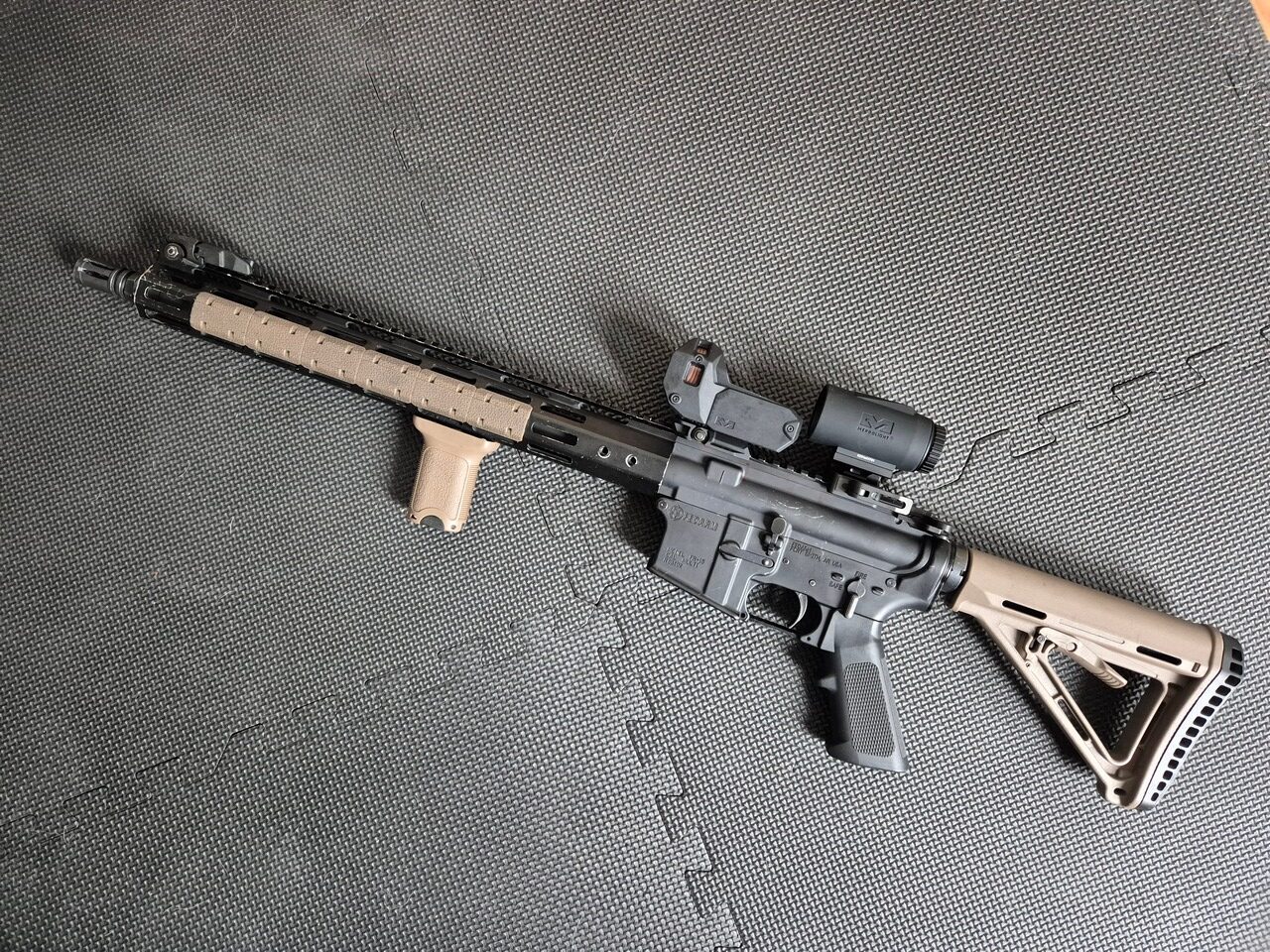
Is it worth it?
If you’re in the market for a magnifier, the new Mepro models are definitely worth considering. In Polish stores, the Mepro MMX3 is priced at 1,899 PLN, while the MMX4 comes in at 2,089 PLN. This puts them at a disadvantage compared to the competition in our market. What is considered an affordable alternative in the U.S. has to compete here with better-priced rival products.

The Mepro MMX3 and MMX4 don’t particularly stand out in their class, but the final decision lies with the shooter. Decent optical quality and a well-equipped package may certainly appeal to potential buyers.
Special thanks to the Strefa Celu store (Jammas company) for providing the Meprolight MMX3 and MMX4 magnifiers for testing.
Sponsored content. Product testing is conducted independently, and all opinions reflect the personal assessment of the author. The sponsor has no influence over the content of the review.



